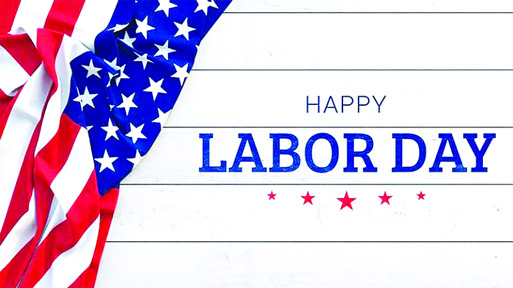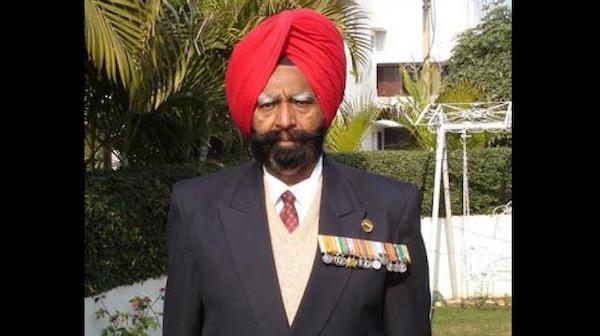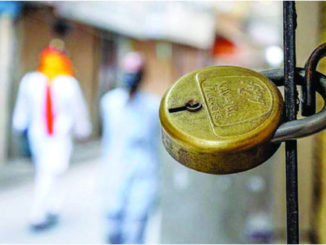
Observed the first Monday in September, Labor Day is an annual celebration of the social and economic achievements of American workers. The holiday is rooted in the late nineteenth century, when labor activists pushed for a federal holiday to recognize the many contributions workers have made to America’s strength, prosperity, and well-being.
United States will celebrate Labor Day 2023 on Monday, September 4. Always observed on the first Monday of September, the federal holiday celebrates the immense contribution of workers in the US who help in the nation’s progress and development. The day also commemorates the labor movement in the late 19th century which led to laws for the betterment of workers.
Americans will be enjoying, picnicking and travelling to tourist destinations during the three-day off from September 2(Saturday) to September 4(Monday). They will be seen enjoying family feasts, drinking parties and sing and dance in joy. On Monday, some people will participate in parades and athletic events. Labor Day, an annual celebration of workers and their achievements, originated during one of American labor history’s most dismal chapters. In the late 1800s, at the height of the Industrial Revolution in the United States, the average American worked 12-hour days and seven-day weeks in order to eke out a basic living. Despite restrictions in some states, children as young as 5 or 6 toiled in mills, factories and mines across the country, earning a fraction of their adult counterparts’ wages.
People of all ages, particularly the very poor and recent immigrants, often faced extremely unsafe working conditions, with insufficient access to fresh air, sanitary facilities and breaks.
As manufacturing increasingly supplanted agriculture as the wellspring of American employment, labor unions, which had first appeared in the late 18th century, grew more prominent and vocal. They began organizing strikes and rallies to protest poor conditions and compel employers to renegotiate hours and pay. Many of these events turned violent during this period, including the infamous Haymarket Riot of 1886, in which several Chicago policemen and workers were killed. Others gave rise to longstanding traditions: On September 5, 1882, 10,000 workers took unpaid time off to march from City Hall to Union Square in New York City, holding the first Labor Day parade in U.S. history.
The idea of a “workingmen’s holiday,” celebrated on the first Monday in September, caught on in other industrial centers across the country, and many states passed legislation recognizing it. Congress would not legalize the holiday until 12 years later, when a watershed moment in American labor history brought workers’ rights squarely into the public’s view. On May 11, 1894, employees of the Pullman Palace Car Company in Chicago went on strike to protest wage cuts and the firing of union representatives.
On June 26, the American Railroad Union, led by Eugene V. Debs, called for a boycott of all Pullman railway cars, crippling railroad traffic nationwide. To break the Pullman strike, the federal government dispatched troops to Chicago, unleashing a wave of riots that resulted in the deaths of more than a dozen workers.
Who Created Labor Day?
In the wake of this massive unrest and in an attempt to repair ties with American workers, Congress passed an act making Labor Day a legal holiday in the District of Columbia and the territories. On June 28, 1894, President Grover Cleveland signed it into law. More than a century later, the true founder of Labor Day has yet to be identified. Many credit Peter J. McGuire, cofounder of the American Federation of Labor, while others have suggested that Matthew Maguire, a secretary of the Central Labor Union, first proposed the holiday.
Labor Day Celebrations
Labor Day is still celebrated in cities and towns across the United States with parades, picnics, barbecues, fireworks displays and other public gatherings, especially over the long Labor Day weekend. For many Americans, particularly children and young adults, it represents the end of the summer and the start of the back-to-school season.
Legal recognition
The popularity of the event spread across the country. In 1887, Oregon became the first state of the United States to make Labor Day an official public holiday. By 1894, thirty U.S. states were already officially celebrating Labor Day. In that year, Congress passed a bill recognizing the first Monday of September as Labor Day and making it an official federal holiday. President Grover Cleveland signed the bill into law on June 28. The federal law, however, only made it a holiday for federal workers. As late as the 1930s, unions were encouraging workers to strike to make sure they got the day off.All U.S. states, the District of Columbia, and the United States territories have subsequently made Labor Day a statutory holiday Labor Day became a federal holiday shortly after the Pullman Strike.
Labor Day versus May Day
The date of May 1 (an ancient European folk holiday known as May Day) emerged in 1886 as an alternative holiday for the celebration of labor, later becoming known as International Workers’ Day. The date had its origins at the 1885 convention of the American Federation of Labor, which passed a resolution calling for adoption of the eight-hour day effective May 1, 1886. While negotiation was envisioned for achievement of the shortened work day, use of the strike to enforce this demand was recognized, with May 1 advocated as a date for coordinated strike action. The proximity of the date to the bloody Haymarket affair of May 4, 1886, further accentuated May First’s radical reputation.
There was disagreement among labor unions at this time about when a holiday celebrating workers should be, with some advocating for continued emphasis of the September march-and-picnic date while others sought the designation of the more politically charged date of May 1. Conservative Democratic President Grover Cleveland was one of those concerned that a labor holiday on May 1 would tend to become a commemoration of the Haymarket affair and would strengthen socialist and anarchist movements that backed the May 1 commemoration around the globe. In 1887, he publicly supported the September Labor Day holiday as a less inflammatory alternative, formally adopting the date as a United States federal holiday through a law that he signed in 1894.
Since the mid-1950s, the United States has celebrated Loyalty Day and Law Day on May 1. Unlike Labor Day, neither are legal public holidays (in that government agencies and most businesses do not shut down to celebrate them) and therefore have remained relatively obscure. Loyalty Day is formally celebrated in a few cities, while some bar associations hold Law Day events to celebrate the rule of law.





Be the first to comment